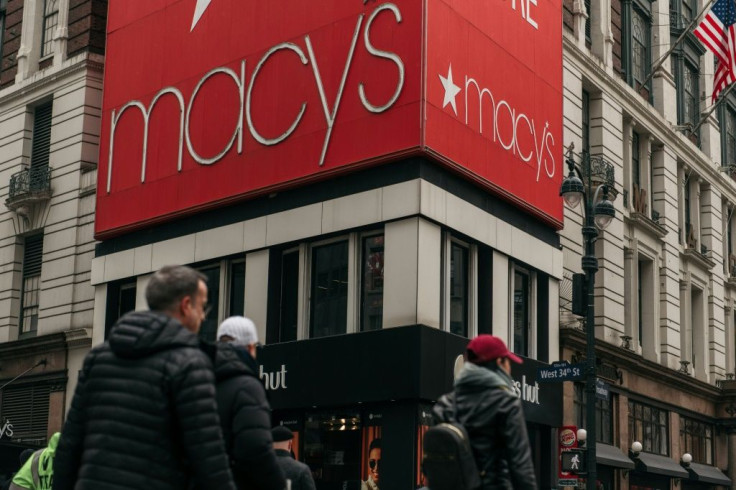Macy's Store Closures Could Help This Rival
Last week, Macy's (NYSE:M) announced that it will close about 30 more full-line stores over the next few months. This marks the second major round of closings under a three-year plan to shrink Macy's full-line store fleet by nearly 25%. The top U.S. department store operator is exiting small and midsize markets and shuttering its lower-productivity stores in big metro areas in favor of a focus on its best-located stores in big markets and its e-commerce business.
But while Macy's has decided it needs to retrench, one of its main rivals has become fairly adept at operating low-volume stores. That could allow Dillard's (NYSE:DDS) to capitalize on its competitor's downsizing.
Facing off with two completely different strategies
At first glance, Macy's and Dillard's seem quite similar. Both companies operate large-format department stores, primarily in regional malls. They are positioned as higher-end brands than the likes of J.C. Penney and Belk, but more affordable than Nordstrom. Indeed, Macy's and Dillard's often compete for the same customers in markets where both chains operate.
However, the similarities end there. In fiscal 2019, Macy's spent $2.3 billion -- more than 9% of its revenue -- on capital expenditures and advertising. These costs effectively represent investments to entice customers to visit Macy's stores and make purchases through its digital channels. To cover these costs, Macy's needs its stores to ring up high sales volumes and thereby churn out strong profits.
By contrast, Dillard's spent just $143 million on CapEx and advertising during fiscal 2019: barely more than 2% of sales. The company hasn't invested much in technology, either for its stores or its e-commerce operations. (Dillard's doesn't even have a mobile app.) The regional department store chain doesn't spend much money trying to acquire new customers, either, relying instead on repeat business from loyal customers and walk-by traffic at the malls where its stores are located.
With much lower overhead costs, Dillard's doesn't need the same level of sales productivity or store-level profitability as Macy's to make money. In fact, Dillard's reported retail sales per square foot of just $127 in fiscal 2019. For comparison, the bottom quintile of Macy's stores -- as measured by store-level profitability -- averaged sales per square foot of $128 in fiscal 2019. (The rest of the chain averaged sales per square foot of more than $200.) Macy's classified two-thirds of the stores in that bottom quintile as "neighborhood" locations that are in line to be closed by the end of 2022.
Ready to capture business from Macy's
Dillard's operates at 10 of the malls where Macy's is closing stores in early 2021, excluding Paradise Valley Mall in Phoenix, where both chains are closing their stores ahead of large-scale redevelopment.
Given the similarity in the two chains' merchandise mixes, Dillard's is likely to capture a meaningful slice of the business that formerly went to Macy's in these locations. This is especially true in markets where Macy's is closing its only store, such as Daytona Beach, Florida; Port Charlotte, Florida; Idaho Falls, Idaho; and College Station, Texas.
Macy's bottom-quintile stores generated an average of $14.9 million of sales during fiscal 2019. This suggests that Dillard's could add tens of millions of dollars to its top line by capturing 15% of Macy's pre-pandemic sales from the stores being closed in malls where Dillard's also operates. Moreover, Macy's will still have about 60 neighborhood locations after completing the current round of store closures. As those stores close later this year or in 2022, it will expand Dillard's opportunity for market share gains.
Could Dillard's respond by opening new stores?
The biggest benefit to Dillard's from Macy's downsizing will come from gaining incremental sales in stores that overlap with locations the latter is closing. However, in certain cases, it could also look to open new stores at malls that its chief rival is leaving. For example, Dillard's plans to open a store in late 2021 at University Place in Orem, Utah, taking over an anchor spot that Macy's vacated in 2019. (Dillard's is also opening a new store in Grand Junction, Colorado this year on the site of a former Sears.)
Many mall owners will aim to fill anchor vacancies quickly in the years ahead in order to keep their properties healthy. This could enable Dillard's to open new stores in attractive markets at a very reasonable cost.
Dillard's certainly isn't immune to the pressure facing many retailers, particularly department stores. But with a business model well-suited to small and midsize markets and the ability to profitably operate low-productivity stores, Dillard's could be a near-term winner in the retail sector.

This article originally appeared in the Motley Fool.
Adam Levine-Weinberg owns shares of Dillard's, Macy's, and Nordstrom and is short May 2021 $14 calls on Macy's. The Motley Fool has no position in any of the stocks mentioned. The Motley Fool has a disclosure policy.





















